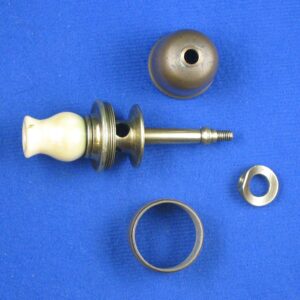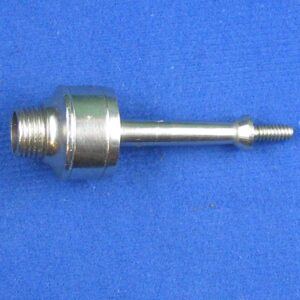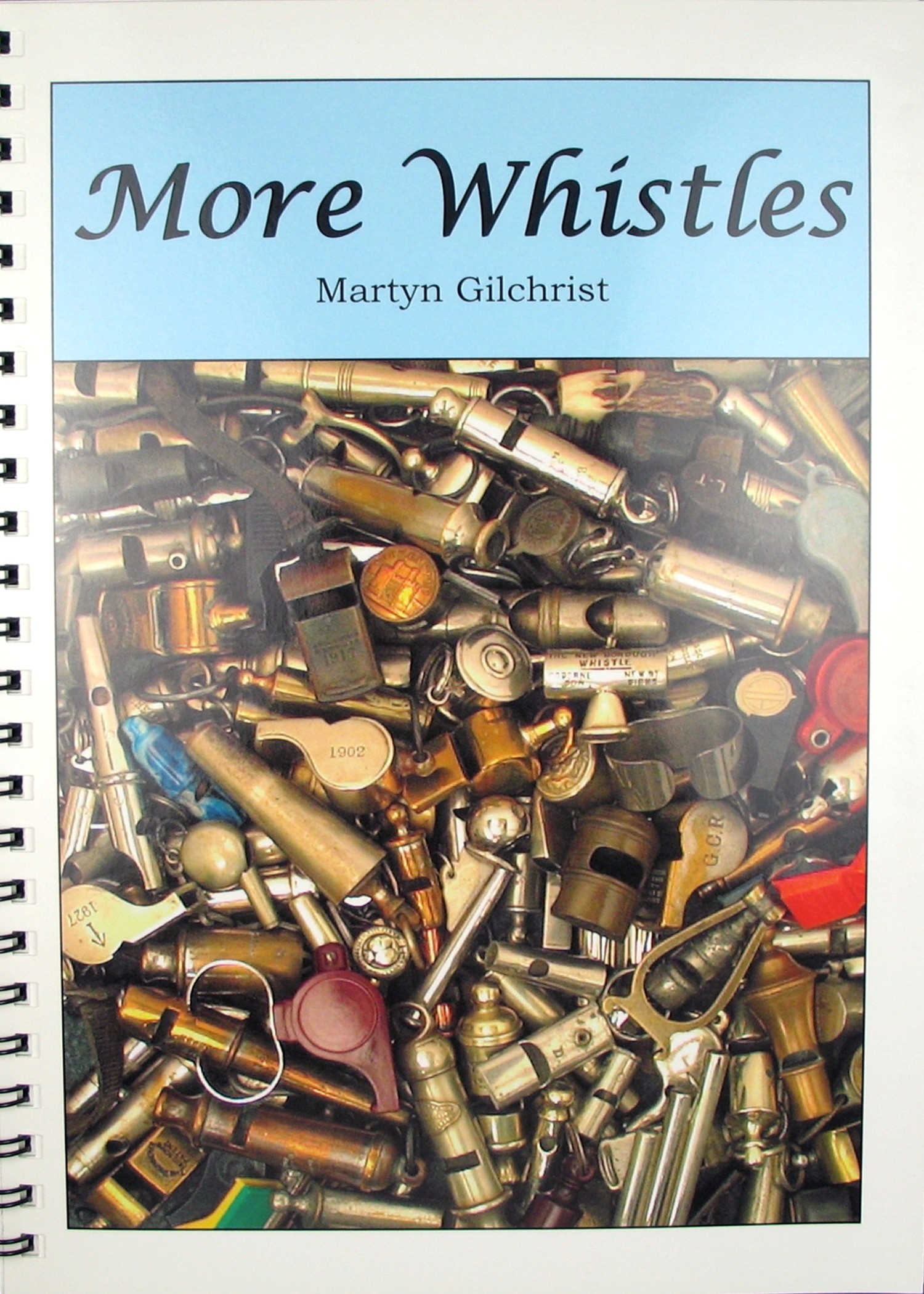Spotlight > Whistle Categories > Bell Whistles > 035
Bells whistles are little known or understood in the whistle world we would venture to say at this point, probably because they are so rarely seen. This SPOTLIGHT endeavors to bring them to light. Previously the only so called ‘bell’ whistles were known to have existed from the 1860s being in the UK and thought only to have been made by Stevens. This was due to the early research done by Gilchrist in his books Whistles and More Whistles.
Until the Hawksley bell ( see SPOTLIGHT on Hawksley bell whistle ) was discovered, Stevens was credited with manufacturing the only bell whistles ( with possibility of a later known French bell having perhaps a different manufacturer ) — and understandably it was assumed that Stevens had designed them.
In other words Stevens bells dominated our thinking as to bell whistles. The Hawksley bell changed all that. Along with that change was a change in creativity as all previous bells were brass and Hawksley used nickel silver. Not only that, but the design inside changed along with the new discovery. As there have not been any patents found, there was no infringement, nor have any been identified with a patent.
Let’s review what has been printed prior in Martyn Gilchrist’s book More Whistles (2005). On page 73 four bell whistles are pictured side by side. They all four have ivory mouthpieces that screw on. One is stamped West London Stevens & Son Southwark, which would date it prior to 1870 when Stevens and Sons became the name change. Here we see a direct connection of the bell whistle to Stevens the manufacturer.
In researching for the SPOTLIGHT article on Richard Porteous an interesting note was found in the book by William Nelson Hutchinson ( 1865 ) Dog Breaking The Most Expeditious, Certain and Easy Method, as follows:
“Railways have led to the introduction of new whistles. Porteous the Band Master at Chelsea College (who’s light infantry Field Pipe is well known to military men) has exercised his ingenious talents in making several, but they are too shrill to be of much service to the sportsman. The acorn ( or bell pattern ) has, however, a much softer tone, yet it too, makes an awful noise. ” ( Italics added )
Richard Porteous retired in 1864. It would be conclusive to say that Richard Porteous likely designed the bell whistle which was already being called the acorn or BELL in 1865.
However G & J W Hawksley is known to have manufactured since the 1850s yet the Hawksley would appear to be a modification of the Porteous bell design, however nothing is conclusive at this point.
The question begs to be asked, who manufactured the first bell whistles ??
It would appear that Richard Porteous was very close to Stevens and Son manufacturing. Indeed Stevens and sons went on to assume the Porteous name on other whistles for a period of time ( i.e.rounds and ‘porteous tops’ GSWs and Police ), eventually removing his name altogether, yet manufacturing the same whistle designs.
With this being said another bell whistle comes into the picture which was found in the United States in the NE ( see SPOTLIGHT USA bell whistle ). Remarkably it has entirely different design characteristics. To date it accurately is quite difficult without a stamp on it or the fact that it has not been seen in any catalogs. Could it have been developed parallel to the UK ??
In any event, presented here are four examples of bell whistle designs. The two in the center are two different model Stevens manufactured bells, the top is from the USA and the bottom is the Hawksley. If the possible French one is obtained it too will be added to this SPOTLIGHT.
Here are the components as best can be seen in exploded pieces:
Clearly the hand size ‘bell’ design can be seen adopted from the larger railway steam or compressed air type whistles already in use for decades. Each is made so that its parts can be taken apart and cleaned. The USA model is the first to use a pillar top from any previously seen bells. The bell ( French ? ) that has been seen by the author was with a wooden mouthpiece. However we especially see another remarkable divergence with the USA model, it being a flared hardened rubber mouthpiece ( like a musical instrument )
All the bells utilize the full circumference for sound as can be seen when taken apart and one can recognize the ‘bell’ shape of the air chamber.
How they get the air to the edge of the bell is all different though. Because we couldn’t get the shaft loose off the USA bell, the top bell is seen with the two pieces still together.
So how the air gets there is where it gets very interesting for the students of whistle designs. Steven’s bells are seen more than any others, so we will start there as typical. Note the center shaft and the ‘offset holes’ for venting the air inside the created chamber before the bell is fully in place. There is a wide ring that must be screwed down first. Then the air is forced at a right angle across the upper disc and across the edge of the bell after it too has put in place.
The smaller Steven’s is close to the same function. However the holes in the shaft are not offset, yet accomplish the same task.
In both cases a wide ring must be screwed down creating a pre chamber before the air emerges towards the bell edge.
Now let’s look at the Hawksley bell. We could not get the wider pre chamber section loose to reveal that there are only two holes in the shaft. However with a penlight it can be seen that they are opposite each other and elongated into very long ellipses. So here we have three variations of guiding air into a pre chamber and venting it out against the bell edge.
Lastly let’s look at the USA bell. It uses an entirely different approach. There is another section to the mouthpiece that unscrews as follows:
What is seen are holes drilled and a distribution chamber is created that acts with more direct flow rather than a pressure building chamber.
We can make a short stop also looking at the mouthpieces.
And also at the top rings and pillar.
What have we learned ?? Bells are more variable than we thought. There may be more in store so keep looking.
TWG
Posted October 20, 2014
Addendum: Posted February 22, 2015
The middle bell is quite large. It still has the ivory mouthpiece like the two smaller ones. Circa 1865 from the same era but unstamped. We see here at least three model sizes. The three models measure:
1) 80mm (3 1/4 ")
2) 85mm (3 5/8 ")
3) 95mm (3 3/4 ")































